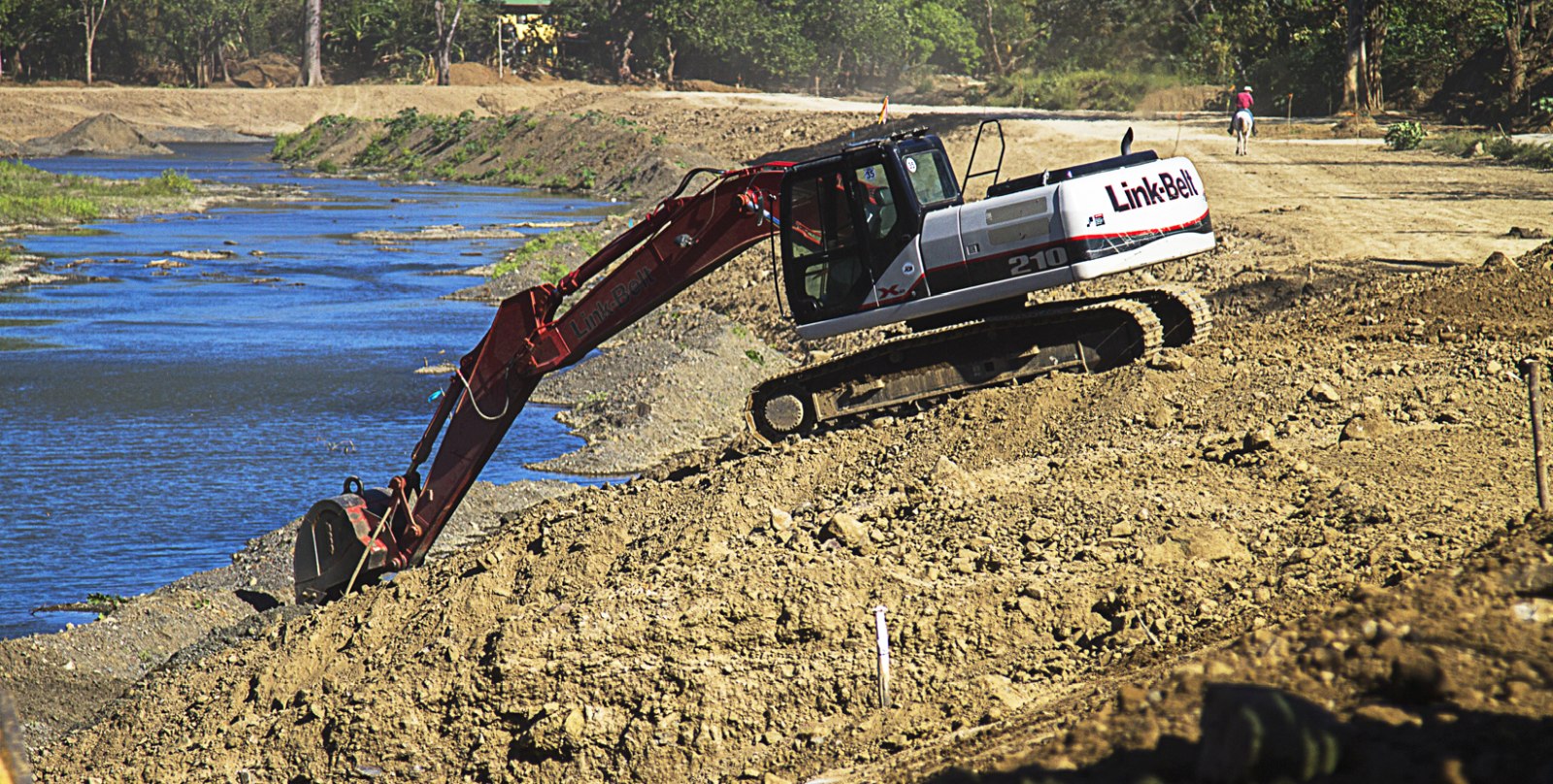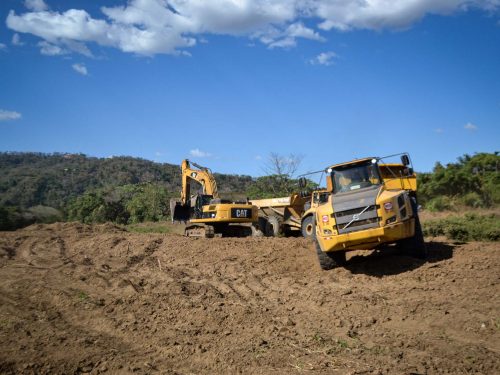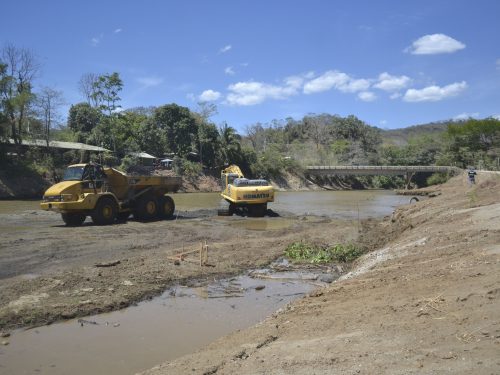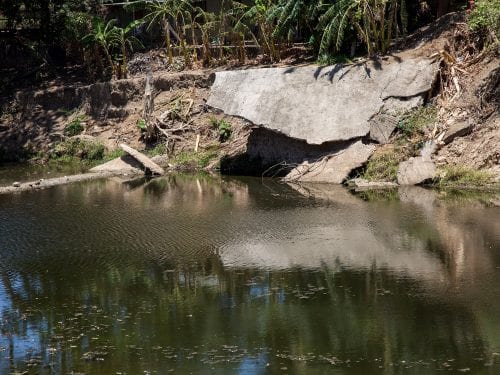
Questions and concerns from neighbors continue regarding the dredging work and the construction of the dike on the Nosara River, and it seems that the more they dig in the tributary, the more questions arise. That’s why the Nosara Leadership Forum organized an informational meeting on Thursday, March 12th at the community hall in Santa Marta.
About 40 people participated in the meeting, including community residents and officials from the institutions responsible for the project.
Henry Villalobos, a representative of the National Emergency Commission (CNE), the entity that is overseeing and funding the work, reminded those present that the objective of the project is to mitigate flooding during rainy season.
“Nobody here, not even us [from the CNE], can say if it is going to flood or not. In reality, that is unknown. We can’t guarantee it. This work has the purpose of mitigating flooding so that the effects are lessened, if it does happen,” he said.
One of the concerns of neighbors is the narrowing of the riverbed in the section that flows into the Nosara Springs real estate project because they are afraid that the river will overflow due to water pressure and volume.
Alvaro Gonzalez, the project inspector for the National Service of Irrigation and Drainage (SENARA), affirmed that the site where Nosara Springs is located, in the Peladas area, has been declared a flood zone previously by the CNE, so the fact that it floods is not due to the dike.
“Nosara Springs is a flood zone and we won’t be aggravating the problem. It is clear that it is declared a flood zone, but we are going to gather more data,” he said.
Likewise, Marco Avila, president of the Nosara Integral Development Association (ADIN), said, “Nosara Springs has always been a lagoon. It is a green area where two meters of water collect when it rains.”
In addition, Gonzalez reported that they have coordinated and set the boundaries of the work so the area where the Ostional Wildlife Refuge begins is not included.
Regarding the technical studies by SENARA that they have to date, Gonzalez said that they did a topographical elevation survey and a hydrologic-hydraulic study.
Another area that neighbors are worried is at risk for flooding is the San Valentin neighborhood, in upper Nosara along the river.
Carlos Villalobos, a resident of the community, commented that this location could flood when faced with the river rising occasionally.
In this regard, Henry Villalobos said, “The ideal thing to do is to guarantee the best kind of work and prevent flooding in any sector, and for all of these sectors, priorities were established and then the project was designed.”
Additionally, one of the recurring questions raised by neighbors was the subject of sewers because many believe that when it rains, the water will accumulate around the dike, creating a risk of flooding or of undermining the dike’s foundations.
Gonzalez affirmed, “We have made provisions in this case to put in eight sewer drainage ways that we consider necessary for rainwater to be emptied in the river.”
Regarding the location of the material that has been extracted from the river and the poor road conditions, Gonzalez indicated that to date they have removed about 75,000 square meters of material, which is located next to ADIN’s quarry and will be used as the foundation for repairing roads.
Gustavo Sequeira, a representative of JCB, the company in charge of the work, explained that they have scheduled maintenance on the approximately 2 kilometers of road between ADIN’s quarry and the project site, mainly in the Los Arenales neighborhood, which has been the most affected.
“[The maintenance] is already scheduled, we already have a team in the area, we have already done a primary maintenance and right now we are scheduling a second maintenance [in March]. We are going to do maintenance according to the condition of the road,” he said.
Regarding the extension of the time frame of the work, Sequeira indicated that, at the request of CNE, the work will be extended to 160 days (originally it was 100) because the company suspended work at the end of December of 2014 due to the festivities and also because the commission added other minor works in forming the dike, so the work is expected to be ready in May of this year.
Regarding the service life of the dike, SENARA estimated that it will last for about 20 years. Once the work is completed, it will be turned over to the Municipality of Nicoya to continue giving it maintenance.







Comments